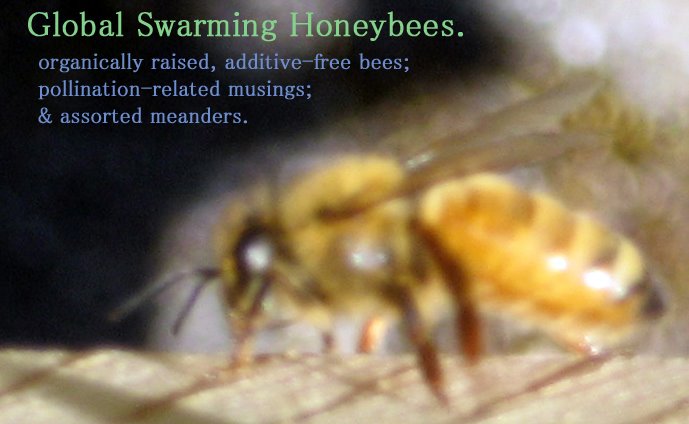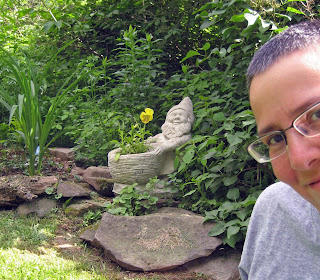For the past couple of years, I've had a little wooden birdhouse hanging from a sumac branch at the edge of our bee yard. Wrens selected it for their residence in both years, and made a cheerful presence in the yard with their ceaseless chatter (such tiny birds; such assertive personalities!).
Back in April, I noticed that the birdhouse had been knocked to the ground, presumably by the wind. When I picked it up, I saw that the mice had been at it, stuffing the birdhouse with milkweed silk and other soft nesting material for a cozy winter and/or breeding retreat.
As I began to gently pry the stuffing out with a stick to ready it for the next generation of wrens, I heard a distinctive buzz resonating from deep within—clear warning—and realized that a bumblebee had taken up residence in the box. I put the birdhouse back on the ground and left nature to take its course (and the wrens to find another nesting spot). But it made me think about the fascinating reproductive life of bumblebees, with their honey pots and underground palaces. It also made me think about all the trouble native bumblebees, like so many of our winged, finned, furred, and photosynthetic brethren, are in.
So I was excited to learn about a new Bumblebee Nest Survey aimed at gathering information on the nesting habits and conservation needs of these wonderful and varied creatures.
According to the survey description:
A bumble bee nest might be located anywhere- one of the reasons for this survey is to find out where they like to nest! It could be under a log, in the ground, in a tree, in the side of a building, or in an old mouse burrow. You'll know you've found a nest if you see bumble bees flying into and out of the same hole repeatedly and if you hear a humming sound near the hole. Bumble bees are gentle and ignore people unless grabbed or their nest threatened, so you're not likely to get stung unless you block the entrance or if you disturb the nest itself.The instructions for making observations are as follows:
When you're near the nest, move slowly and walk softly so you don't alarm [the bees] and you're very unlikely to be stung. You will likely not be able to see the nest, as it will probably be concealed by something like leaves or grass. Don't try to uncover the nest if you can't see it. You don't need to see the nest itself to contribute invaluable information for this research- just be as descriptive of the location as possible.
 If, in your travels or birdhouse-cleaning efforts, you come upon a bumblebee nest, why not add to the body of bumblebee knowledge by participating in the Bumblebee Nest Survey?
If, in your travels or birdhouse-cleaning efforts, you come upon a bumblebee nest, why not add to the body of bumblebee knowledge by participating in the Bumblebee Nest Survey?








1 comment:
nice post. I had no idea about bumblebee nests in the ground, either. thanks.
Post a Comment